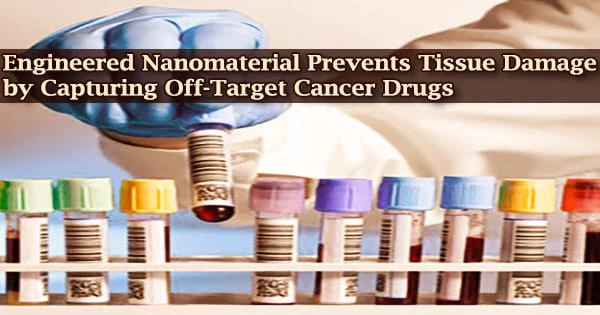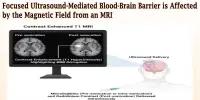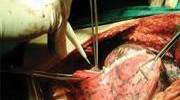Standard chemotherapies can effectively destroy cancer cells, but they also put healthy cells at risk, resulting in secondary sickness and a lower quality of life for patients. Researchers led by Penn State have invented a new class of nanomaterials designed to catch chemotherapy chemicals before they interact with healthy tissue, preventing previously unavoidable damage.
“To reduce the off-target effects of cancer drugs during and after localized chemotherapy, eliminating their systemic circulation is necessary,” said principal investigator Amir Sheikhi, assistant professor of chemical engineering and biomedical engineering at Penn State.
“Available and proposed platforms to remove unwanted drugs primarily the chemotherapy drug doxorubicin (DOX) from blood are exceedingly ineffective, failing to remove enough of the drug to prevent damage. We have developed a highly efficient approach that captures DOX at a capacity more than 3,200% higher than other platforms, such as DNA-based materials.”
The technology is based on hairy cellulose nanocrystals nanoparticles produced from the major component of plant cell walls and made to have massive numbers of polymer chain “hairs” protruding from each end, which are currently available online ahead of the March issue of Materials Today Chemistry.
According to Sheikhi, these hairs improve the nanocrystals’ potential drug collection capability much beyond that of regular nanoparticles and ion exchange resins.
“To the best of our knowledge, there is currently no nanoparticle-based super-capacity drug capture system,” Sheikhi said, noting that the development of such a system could have a significant impact on cancer treatment plans.
“For some organs, like the liver, chemotherapy can be locally administered through catheters. If we could place a device based on the nanocrystals to capture the excess drugs exiting the liver’s inferior vena cava, a major blood vessel, clinicians could potentially administer higher doses of chemotherapy to kill cancer more quickly without worry about damaging healthy cells. Once the treatment is finished, the device could be removed.”
Available and proposed platforms to remove unwanted drugs primarily the chemotherapy drug doxorubicin (DOX) from blood are exceedingly ineffective, failing to remove enough of the drug to prevent damage. We have developed a highly efficient approach that captures DOX at a capacity more than 3,200% higher than other platforms, such as DNA-based materials.
Amir Sheikhi
The researchers chemically modified cellulose fibers found in softwood pulp and imparted a negative charge on the hairs, rendering them stable against the ionic composition of blood, to create hairy cellulose nanocrystals capable of collecting chemotherapeutic medicines.
This, according to Sheikhi, corrects a flaw in traditional nanoparticles, whose charge can be rendered inert or diminished when exposed to blood, reducing the number of positively charged drug molecules it can bind to to a negligible amount.
The binding ability of the nanocrystals was examined in human serum, a protein-rich component of blood that does not contain red, white, or platelets. More than 6,000 mg of DOX were efficiently eliminated from the serum for every gram of hairy cellulose nanocrystals.
“The hairy nanocrystals allowed us to push the limit by at least two-to-three orders of magnitude compared to some other available platforms,” Sheikhi said.
The nanocrystals had no influence on red blood cells in whole blood or cell development in human umbilical vein endothelial cells, according to the researchers.
“We found that the hairy cellulose nanocrystals bind to positively charged drugs in human serum and capture DOX immediately, and they do so without imposing any cytotoxicity or hemolytic effects,” Sheikhi said.
“We envision that this effective, non-toxic nanoparticle could be a building block for the next generation of devices to capture excess drugs and remove unwanted molecules from the body, such as psychedelics and toxins.”
Hairy cellulose nanocrystals, according to Sheikhi, have far-reaching ramifications beyond the body. His group has developed nanocrystals that preferentially bind to neodymium, a rare earth element, in order to recover valuable material from electronic waste.
“We’re excited to introduce a new material with such a high capacity to separate a variety of elements, which will hopefully open new opportunities for a broad range of applications,” Sheikhi said.
Sheikhi began this work as a postdoctoral scholar in Ali Khademhosseini’s laboratory at the University of California, Los Angeles, where he is now the chief executive officer of Terasaki Institute for Biomedical Innovation. Joy Muthami and Patricia Wamea, both recent master’s degree grads in chemical engineering, and Mica Pitcher, a Ph.D. student in chemistry, are among the other Penn State collaborators.
UCLA contributors include Sarah A.E. Young, Peter Antovski, Robert Denis Murphy, Andrew Schmidt, Samuel Clark, and, for a portion of the research, Reihaneh Haghniaz. Haghniaz is now affiliated with the Terasaki Institute for Biomedical Innovation.
The National Institutes of Health, the Canadian Institutes of Health Research and Penn State funded this research.















